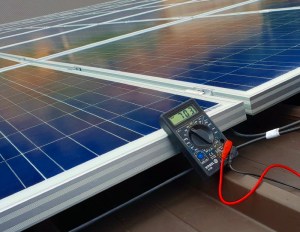The Power of Rooftop Solar
An industrial REIT undertakes the nation's largest rooftop community solar project.

Image by Alex Csiki via Pixabay.com
STAG Industrial’s recent announcement of three new Maryland rooftop community solar projects is being hailed as a step in providing low-cost renewable energy to local homes and businesses.
The projects are owned and developed by Summit Ridge Energy with Black Bear Energy as co-developer. The systems have an aggregate capacity of 11.6 megawatts and will generate more than 15 million kilowatt-hours of electricity annually, enough to power almost 1,500 homes. A 9.2 MW installation planned for STAG’s facility in Hampstead, Md., is on track to be the largest rooftop community solar project in the U.S.
READ ALSO: Shedding Light on Solar Site Selection
“There are many places where customers—whether industrial, commercial or residential—don’t have the space to install solar, despite wanting to,” Casey Herman, U.S. leader for power utilities with PwC, told Commercial Property Executive. “Industrial has the ability to install community solar because of its larger scale, selling shares of the solar output to the people who want it.”
STAG Industrial was forward-looking in making community solar part of its business strategy, because the company’s industrial rooftops make great solar farms, added Byron Carlock, PwC’s U.S. leader for real estate.
“The advantages are increased rental income, and STAG looks like a very forward-looking corporate citizen in the discussion around all things ESG,” he noted. “You can generate a whole lot more solar capacity on an industrial roof than on an office building roof. The community solar phenomenon is real and important.”
CRE Benefits
Community solar presents real estate companies with an array of benefits, tangible and otherwise, said Pamela Maines, senior vice president, business development at Empower Energies, a Bethesda, Md.-based company that works with large commercial customers to design, develop and finance renewable projects.
Maryland is one of the growing number of states that have enabling legislation available to properties and customers. Host real estate companies benefit through lease revenues from unused roof space, Maines noted.
READ ALSO: Top 10 LEED-Certified Buildings in Washington, D.C.
Other benefits include contributing to resiliency and sustainability. In areas with unreliable power grids, community solar can help offset retirements of older power generators with clean, zero-emission power.
Community solar projects’ viability depends on roof condition and leasing terms, Maines noted. Roofs must be evaluated to determine whether they are structurally capable of hosting solar installations.
For example, the roof membrane must be in good condition and under warranty. In some instances, initial roof replacements can be financed as part of projects. The lessee-solar project owner must be assured that the roof is adequate for the installation to generate sufficient power over the equipment’s life to recoup the initial investment cost. The lease term is usually 20 years or more, and the lease must transfer with a sale of the property.
“The building owner-lessor is a passive host, and the good news is the solar system owner takes care of all of the system maintenance,” Maines said. The approach allows property owners to support clean energy while generating incremental revenue, she added.
Tax Credits
The solar investment tax credit, which had been slated to drop from 26 to 21 percent in 2021, will stay at 26 percent for two more years, noted Julio Gonzalez, CEO of Engineered Tax Services. All solar projects in residential, commercial, industrial and utility-scale segments starting construction in 2021 and 2022 will still garner the 26 percent credit. After 2022, the ITC will ratchet down until it will be eliminated.
Maryland’s pilot program also faces time limits. “It takes 10 to 12 months to get a project designed, permitted and approved prior to construction start,” Maines noted. “It’s not too soon to start today to get a project under consideration to take advantage of these regulatory and program benefits.”







You must be logged in to post a comment.